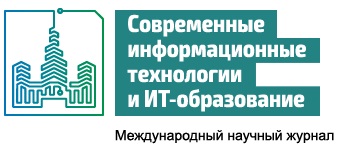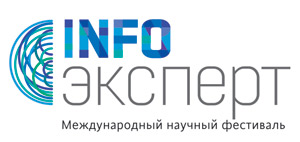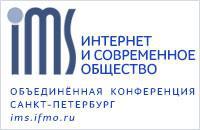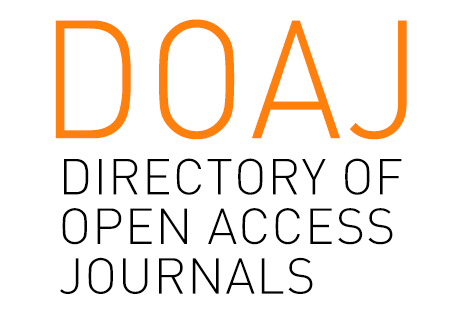РЕАЛИЗАЦИЯ МЕТОДА ВЕТВЕЙ И ГРАНИЦ ДЛЯ ЗАДАЧИ ВОССТАНОВЛЕНИЯ МАТРИЦЫ РАССТОЯНИЙ МЕЖДУ ПОСЛЕДОВАТЕЛЬНОСТЯМИ ДНК
Аннотация
В биоинформатике имеются две важные задачи для исследования эволюционных процессов: вычисление расстояния между последовательностями ДНК и восстановления матрицы расстояний между такими последовательностями для различных геномов, когда известны не все элементы этой матрицы. В силу большой размерности цепочек ДНК для решения первой задачи используются эвристические алгоритмы. Их основной недостаток состоит в том, что при использовании различных эвристических алгоритмов для вычисления расстояния между одной и той же парой цепочек ДНК получаются различающиеся значения.
Для проведения сравнительного анализа этих эвристических алгоритмов был введён показатель badness для всех треугольников, образующихся в матрице ДНК, и в идеале он должен быть равен нулю. Этот показатель использовался в дальнейшем и для решения второй задачи. На основе того, что показатель badness должен быть равен нулю, разработан алгоритм восстановления матрицы расстояний между цепочками ДНК. Этот алгоритм оптимизирован применением в нём метода ветвей и границ. С помощью описываемого нами варианта этого метода выбирается такая последовательность вычисления неизвестных элементов, при которой значение показателя badness матрицы будет наименьшим.
Часть статьи посвящена подробному описанию алгоритмов. Самым важным среди вспомогательных алгоритмов является алгоритм выбора разделяющего элемента, т.е. наиболее важного из неизвестных элементов, того, который мы восстанавливаем в первую очередь. Основной алгоритм, т.е. собственно восстановление матрицы ДНК методом ветвей и границ, включает описание задачи, состоящей из подзадач; каждая из последних является набором из преобразованной матрицы, последовательности уже восстановленных элементов исходной матрицы и множества тех ещё не заполненных элементов матрицы, которые нельзя выбирать на следующем шаге алгоритма. В статье также приведено описание программной реализации описанных алгоритмов.
Литература
[2] Zhou J., Zhong P., Zhang T. A Novel Method for Alignment-free DNA Sequence Similarity Analysis Based on the Characterization of Complex Networks. Evolutionary Bioinformatics. 2016; 12:229-235. (In Eng.) DOI: 10.4137/EBO.S40474
[3] Alexeev N., Aidagulov R., Alekseyev M.A. A Computational Method for the Rate Estimation of Evolution-ary Transpositions. In: Ortuño F., Rojas I. (eds) Bioinformatics and Biomedical Engineering. IWBBIO 2015. Lecture Notes in Computer Science. Springer, Cham. 2015; 9043:471-480. (In Eng.) DOI: 10.1007/978-3-319-16483-0_46
[4] Evdokimova N.I., Kuznetsov A.V. Local patterns in the copy-move detection problem solution. Computer Optics. 2017; 41(1):79-87. (In Russ.) DOI: 10.18287/2412-6179-2017-41-1-79-87
[5] Eckes B., Nischt R., Krieg T. Cell-matrix interactions in dermal repair and scarring. Fibrogenesis and Tissue Repair. 2010; 3(4). 11 pp. (In Eng.) DOI: 10.1186/1755-1536-3-4
[6] Korabelshchikova S.Y., Melnikov B.F., Pivneva S.V., Zyablitseva L.V. Linear codes and some their applications. Journal of Physics: Conference Series. 2018; 1096:012174. (In Eng.) DOI: 10.1088/1742-6596/1096/1/012174
[7] Korabelshchikova S.Y., Melnikov B.F., Pivneva S.V., Zyablitseva L.V. Linear error correcting codes and their application in DNA analysis. Proceedings of the 4th International Conference on Information Technology and Nanotechnology (ITNT-2018). Samara, 2018, pp. 2095-2100. Available at: https://elibrary.ru/item.asp?id=34894963& (accessed 15.12.2018). (In Eng.)
[8] Melnikov B., Radionov A., Gumayunov V. Some Special Heuristics for Discrete Optimization Problems. Proceedings of the Eighth International Conference on Enterprise Information Systems: Databases and In-formation Systems Integration (ICEIS- 2006), Paphos, Cyprus, May 23-27, 2006, pp. 360-364. (In Eng.)
[9] Melnikov B. Discrete optimization problems - some new heuristic approaches. Proceedings of the Eighth International Conference on High-Performance Computing in Asia-Pacific Region (HPCASIA'05), Beijing, 2005, pp. 8 pp.-82. (In Eng.) DOI: 10.1109/HPCASIA.2005.34
[10] Melnikov B.F., Melnikova E.A., Pivneva S.V., Dudnikov V.A., Davydova E.V. Geometric and game approaches for some discrete optimization problems. CEUR Workshop Proceedings. 2018; 2212:312-321. Available at: http://ceur-ws.org/Vol-2212/paper42.pdf (accessed 15.12.2018). (In Eng.)
[11] Forrest A.R.R. et al. A promoter-level mammalian expression atlas. Nature. 2014; 507:462-470. (In Eng.) DOI: 10.1038/nature13182
[12] Klyosov A.A., Faleeva T. Excavated DNA from Two Khazar Burials. Advances in Anthropology. 2017; 7:17-21. (In Eng.) DOI: 10.4236/aa.2017.71002
[13] Melnikov B.F., Pevneva S.V., Trifonov M.A. Multiheuristic approach to compare the quality of defined metrics on the set of dna sequences. Sovremennye informacionnye tehnologii i IT-obrazovanie = Modern Information Technologies and IT-Education. 2017; 13(2):89-96. (In Russ.) DOI: 10.25559/SITITO.2017.2.235
[14] Melnikov B.F., Pivneva S.V., Trifonov M.A. Comparative analysis of the algorithms of calculating distances of DNA sequences and some related problems. Proceedings of the Third International Conference on Information Technology and Nanotechnology (ITNT-2017). Samara, 2017, pp. 1640-1645. Available at: https://elibrary.ru/item.asp?id=29267020 (accessed 15.12.2018). (In Eng.)
[15] Melnikov B.F., Pivneva S.V., Trifonov M.A. Various algorithms, calculating distances of DNA sequences, and some computational recommendations for use such algorithms. CEUR Workshop Proceedings. 2017; 1902:43-47. Available at: http://ceur-ws.org/Vol-1902/paper8.pdf (accessed 15.12.2018). (In Eng.)
[16] Melnikov B.F., Melnikova E.A., Pivneva S.V., Trenina M.A. An approach to analysis of the similarity of DNA-sequences. CEUR Workshop Proceedings. 2018; 2212:63-72. Available at: http://ceur-ws.org/Vol-2212/paper9.pdf (accessed 15.12.2018). (In Eng.)
[17] Melnikov B.F., Trenina M.A. On a problem of the reconstruction of distance matrices between DNA sequences. International Journal of Open Information Technologies. 2018; 6(6):1-13. Available at: https://elibrary.ru/item.asp?id=35050442 (accessed 15.12.2018). (In Russ.)
[18] Melnikov B.F., Trenina M.A., Kochergin A.S. On one problem of reconstructing matrix distances between chains of DNA. IFAC-PapersOnLine. 2018; 51(32):378-383. (In Eng.) DOI: 10.1016/j.ifacol.2018.11.413
[19] Melnikov B.F., Trenina M.A. The application of the branch and bound method in the problem of reconstructing the matrix of distances between DNA strings. International Journal of Open Information Technologies. 2018; 6(8):1-13. Available at: https://elibrary.ru/item.asp?id=35392804 (accessed 15.12.2018). (In Russ.)
[20] Melnikov B.F., Trenina M.A. On possible methods for solving the problem of reconstructing the matrix of distances between DNA strings. CEUR Workshop Proceedings. 2018; 2258:11-20. Available at: http://ceur-ws.org/Vol-2258/paper2.pdf (accessed 15.12.2018). (In Eng.)
[21] Goodman S.E., Hedetniemi S.T. Introduction to the Design and Analysis of Algorithms. NY: McGraw-Hill, 1977. 371 pp. (In Eng.)
[22] Hromkovič J. Algorithmics for Hard Problems. Introduction to Combinatorial Optimization, Randomiza-tion, Approximation, and Heuristics. Springer-Verlag Berlin Heidelberg, 2004. 538 pp. (In Eng.) DOI: 10.1007/978-3-662-05269-3
[23] Needleman S., Wunsch Ch. A general method applicable to the search for similarities in the amino acid sequence of two proteins. Journal of Molecular Biology. 1970; 48(3):443-453. (In Eng.) DOI: 10.1016/0022-2836(70)90057-4
[24] Melnikov B.F., Trenina M.A., Kochergin A.S. An approach to improving algorithms for computing distances between DNA chains (by the example of the Needleman – Wunsch algorithm). University proceedings. Volga region. Physical and mathematical sciences. 2018; 1(45):46-59. (In Russ.) DOI: 10.21685/2072-3040-2018-1-4.
[25] Ayala F.J., Kiger J.A. Jr. Modern Genetics (Second edition). Menlo Park and London, 1984. 923 pp. (In Eng.)

Это произведение доступно по лицензии Creative Commons «Attribution» («Атрибуция») 4.0 Всемирная.
Редакционная политика журнала основывается на традиционных этических принципах российской научной периодики и строится с учетом этических норм работы редакторов и издателей, закрепленных в Кодексе поведения и руководящих принципах наилучшей практики для редактора журнала (Code of Conduct and Best Practice Guidelines for Journal Editors) и Кодексе поведения для издателя журнала (Code of Conduct for Journal Publishers), разработанных Комитетом по публикационной этике - Committee on Publication Ethics (COPE). В процессе издательской деятельности редколлегия журнала руководствуется международными правилами охраны авторского права, нормами действующего законодательства РФ, международными издательскими стандартами и обязательной ссылке на первоисточник.
Журнал позволяет авторам сохранять авторское право без ограничений. Журнал позволяет авторам сохранить права на публикацию без ограничений.
Издательская политика в области авторского права и архивирования определяются «зеленым цветом» в базе данных SHERPA/RoMEO.
Все статьи распространяются на условиях лицензии Creative Commons «Attribution» («Атрибуция») 4.0 Всемирная, которая позволяет другим использовать, распространять, дополнять эту работу с обязательной ссылкой на оригинальную работу и публикацию в этом журналe.













